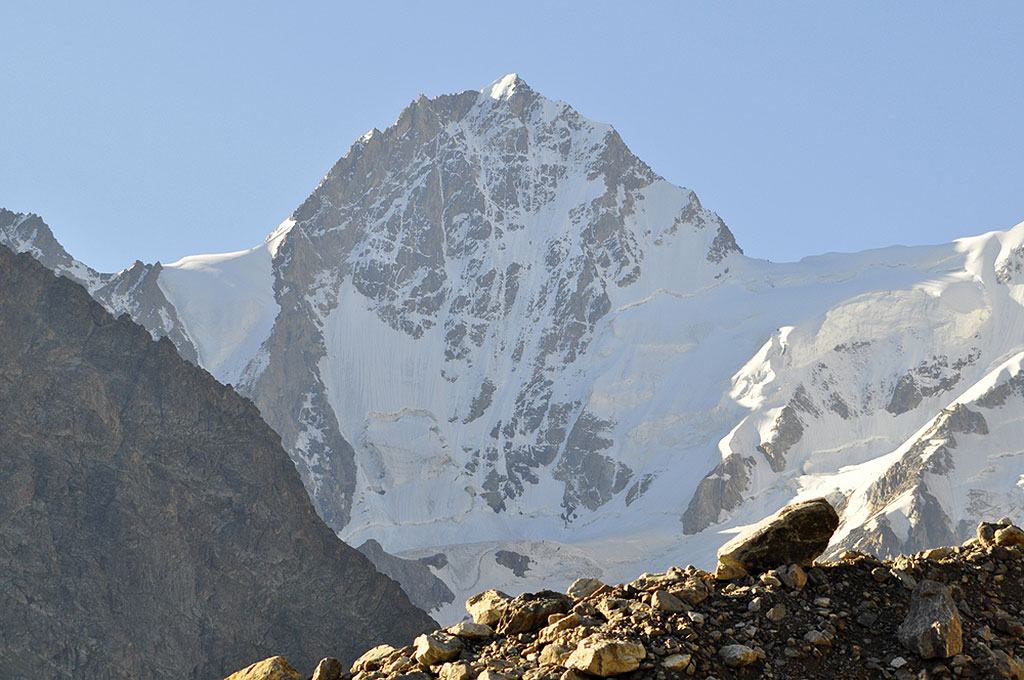
「シャンバラは、無知と物質主義の砂漠にある、慈愛と愛と自由と光のオアシスである。
– サハジャナンダ
シャンバラの聖域をめぐる伝説は数多くある。ある者はそれを物理的な場所と見なした。ヒマラヤの高地に隠された楽園/ユートピアだ。また、地球の北極と南極にある(と思われる)穴からアクセスできる、空洞の地球の内部にある神秘的な土地だと考える者もいる。
他の人々にとっては、シャンバラの地は微妙なアストラル領域である。人類への愛の発露として存在する、かつて地球上で人間として生きていた存在たちが住む領域だ。彼らは、これらの存在が人類の精神的発展を導き、人類が存在する限りそうしてきたと言う。

「物理的な世界とスピリチュアルな世界をつなぐゲートウェイであり、心を閉ざした者からは精神的な障壁によって隠されている。
-サハジャナンダ
シャンバラに関する最も広範な記述は、カラチャクラに関するチベット仏教のタントラの教えの中に見られる。伝説そのものは、チベットの仏教の伝統よりもずっと以前に登場している。
カラチャクラの教えでは、「カルマ的に価値のある」者だけがこの純粋な領域に入ることができるとされている。ダライ・ラマ14世自身、1985年にカラチャクラ・タントラのイニシエーションを授けているときに、”私たちが言えるのは、そこは純粋な土地であり、人間の領域における純粋な土地であり、功徳と実際のカルマの関連性がなければ、実際にそこに到達することはできない “と述べた。
シャンバラの神聖な領域は、その大部分が謎に包まれている。シャンバラの知識は、信じがたい伝説や寓話的・神話的な物語によって覆い隠されている。しかし、そのような領域は実在する。
スピリチュアル・マスターであり、フリダヤ・ヨーガの創始者であるサハジャナンダによる最近のサットサング・シリーズは、この領域、人類の進化におけるその役割、そして私たちの誰もがシャンバラと直接、体験的につながることができる現実的な可能性について、豊富な直接体験的、理論的理解をもって明らかにしている。
この記事は、このシリーズでサハジャナンダが述べたアイデアの要約と、追加調査の断片を組み合わせたものである。シャンバラについてのサットサンはこちらで見ることができる。

まずは、シャンバラの聖なる領域がどのような文化によって、どのような名前で呼ばれてきたかを見てみよう。
サンスクリット語:
シャム = 幸福 静けさ
バーラ(bhal) = 与える。
チベット語:
Bde’byung(ブデビュング)= 幸福の源
幸福の源はシヴァ神に与えられた名前である。シャンバラの教えの普及に大きな役割を果たしたチベットのラマ僧、カーム・トゥル・リンポチェは、自らシャンバラをシヴァ神の持つ土地と呼んでいる。
人類の集合的な神話には、この領域の他の多くの名前が含まれている。アガルタ、シャングリラ、生者の国、禁断の国、白い水の国。輝く精霊の国、生きた火の国、生きた神々の国、水の国。
多くの文化が、人類を精神的に支える神秘的な微妙な王国について書いてきた。ヒンズー教徒はパラデーシャ、アーリアヴァルシャ、つまりヴェーダが生まれた土地について語る。中国人はヒシ・ティエンとして知られる土地を認識している。これらの記述はチベットの仏教よりも古い。ヨーロッパではケルト人がアヴァロンのことを話していた。キリスト教徒とユダヤ教徒はエデンの園について話している。ヘブライの伝説では、不死の住処である聖なる山の近くにある地下都市「ルズ」に言及している。
私たちは、さまざまな名前や歴史上の出来事をはっきりと見ることができる。特別な秘密の隠された領域という考え方が、人類にとって馴染みのないものではないことは明らかだ。そのようなスピリチュアルな意味を持つ領域は、実に多くの古代文化に登場する。
名前そのものが、そのような領域が歴史的に何を意味し、何を意味してきたかを私たちに描き出してくれる。サハジャナンダは、名前そのものが、単に学問的に興味深い歴史的な詳細ではないことを指摘する。その領域がどのような名前で知られているかを考えることは、シャンバラとのつながりを呼び起こす方法なのだ。
例えば、「生きた火の国」と呼ばれる神話の国にインスピレーションを受けない人はいないだろう。少なくとも、心に鮮明なイメージを描く。また、ヨーガを実践している人なら、「シヴァ神に抱かれた土地」にすぐに興味をそそられない人はいないだろう。
シャンバラの聖なる領域』という言葉でさえ、私たちに深いインスピレーションを与えてくれる。
シャンバラはまさに完全性の表現であり、平和と調和の究極の姿であり、心と魂を純粋にした者の住処である。慈愛を放ち、すべての衆生のために霊的覚醒を待ち望む者たちの住処である。
– サハジャナンダ
サハジャナンダは、最も洗練された意味において、シャンバラはアストラル界よりももっと親密なものだと考えている。それは人間の意識の中に存在する自由の希望である。それは真理と自由が可能性であることを知るものとして、各存在の中に生きている導きの光である。そして、真理と自由を求め、生きるために人生を捧げようとする人間の意志である。
この観点からすると、シャンバラの伝説はスピリチュアルな向上心を高めてくれる。凡庸さ、利己主義、無知よりも魂を高めるよう、私たちを鼓舞する。私たちの心と魂を永遠へと向かわせるのだ。
しかし、これらの伝説は思い起こさせるものにすぎない。物語は私たちの存在の中にある深い知識に触れ、共鳴する。私たちがすでにこの微妙な領域の恵みを知っていることを思い出させてくれる。
サハジャナンダはシャンバラのことを微妙な領域と呼ばないように勧めている。そうではなく、この現実に生きている可能性が私たちの世界に現れているのだ、と彼は主張する。シャンバラは地上と天上、人間と神を結ぶ架け橋である。この橋はスピリチュアル・ハートとして理解されるべきである。その現実を知る内なるものとして。
シャンバラとは、真理を内的に知り、真理に完全に献身することである。この世界にその現実を現すことのできる信仰と信頼である。
シャンバラは実在する、あるいは実在した場所であると何度も主張されてきたが、通常は東アジア、現代のチベットの北にあると考えられてきた。ある人によれば、第二次世界大戦中、ナチスの将校がヒマラヤに派遣され、この神秘的な力のある土地を探したという。
哲学協会のブラヴァツキー夫人によれば、かつて現在のゴビ砂漠を覆う海があったという。その海の真ん中にアトランティスと同じ島があった。この島の住人は、古代インド人に知識と修行を教えたという。
彼女のヒンズー教の学生は、この古代社会が後にヴェーダとなる知識を教えたと主張している。私たちがヨガやタントラとして知っている秘教的な理解も、このアトランティス人によって教えられたものだ。
また、ヒマラヤのどこかに物理的な地球の内部への秘密の入り口があるという説もある。この観点からすると、地球は空洞であると考えられる。地球の奥深くには、アガルタという名の王国があると言われている。その住人は、人類を導く悟りを開いた存在である。
伝説によると、シャンバラは微妙なアストラル領域として存在する。そこは慈悲深い王によって統治されている。この王は、世界が戦争と貪欲に堕落し、すべてが失われた時に、黄金時代の到来を告げるために現れる。王は大軍を従えて堕落した支配者たちを打ち負かすという。
この理解には真実がある。この微妙なアストラル領域へのアクセスは、シャンバラのヤントラを使った瞑想によって行うことができる。
この領域が人類に与える影響を理解する、より実践的な方法がサハジャナンダによって表現されている。彼はシャンバラを完全な霊的共同体の原型と考えている。世界中どこでも、人間が集まり、霊性修行に人生を捧げるところは、シャンバラの叡智の現れである、と彼は言う。この微妙な領域の影響は、人類を向上させ、支援するというスピリチュアルな共同体の純粋な意図によって表現されるのだという。
マイパームリーフでは、パームリーフの予言に取り組んでいる。それらはシャンバラの領域の恵みの表現そのものであると考える。
これらの葉は、何世紀も前に同じサプタリシによって書かれたものである。 ヴェーダを書いたのはシャンバラである。これまで見てきたように、ヴェーダそのものがシャンバラの叡智の表現である。ヴェーダは、カリ・ユガの時代に突入した人類を導くために作られた。
パームリーフ・リーディングの第一の目的は、そこに含まれる情報を伝えることではない。アガスティアの葉の予言は、人々をシャンバラの叡智に繋げるための媒体として機能するのである。
それらはまず、恵みが私たちに与えられていることを思い出させてくれる。ガイダンスとサポートはいつでも利用できる。そして、信頼することを思い出させてくれる。愛と真実と自由がこの地球上で生きている現実である可能性を信頼することを。
具体的には、葉の中で推奨されているプージャーを実践することで、特別なつながりが生まれる。それは求道者と神との間に形成されるものである。
シャンバラの教えや伝説は、美しく、感動的で、神秘的である。それらはまた、多くの面でやや不明瞭でもある。微妙なアストラルの領域や、古代の、高度な、隠された王国は、高い山の中や、地球(空洞?)の中に埋もれている。
しかし、私たちは皆、この地上での生き方が完全に首尾一貫したものではないことを心の中で知っている。明晰で完全な自由というものが存在することを、私たちは心の奥底で知っている。完全な信頼、愛、開放性に基づいた世界や社会が可能であることを知っている。
その本質において、シャンバラの伝説は私たちにこのことを思い出させてくれる。神秘的なイニシエーションはさておき、少なくとも今のところ、その領域とのつながりは本質的に私たちの中にある。その親密な内なる知識にある。
その信仰とつながり、増幅させる方法はたくさんある。実際、スピリチュアルな道とは本質的に、その信仰から、その信仰に向かい、その信仰の中で旅をすることなのだ。そしてその方法のひとつが、アガスティアの葉の予言の恵みによって、まさにここで利用できるのだ。
発行:2022年11月15日